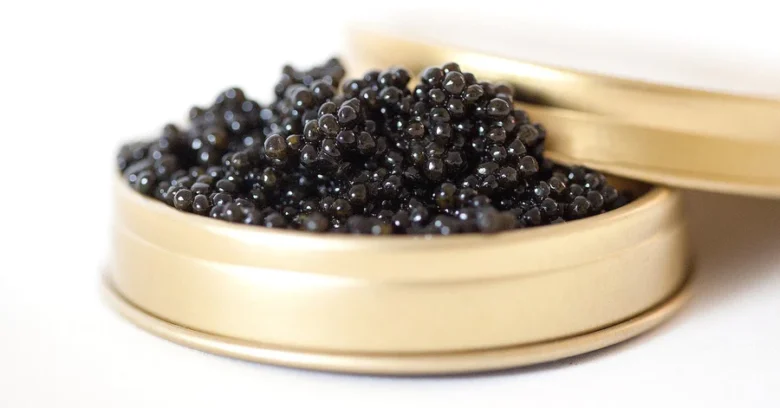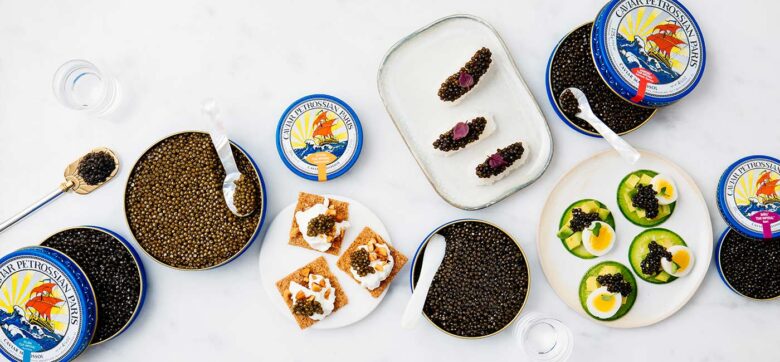Are you curious to know what makes Beluga caviar so special among the world’s most luxurious delicacies? Join us on this journey as we explore the fascinating history and amazing facts about Beluga caviar that make it a must-have on any special occasion.
Contents [show]
Nutritional Benefits of Beluga Caviar

Source: mobilegourmetfoods.com
Beluga caviar offers a wide range of nutritional benefits. It is high in protein, omega-3 fatty acids, and Vitamins A, B12, and D. The high protein content helps to maintain immunity against illnesses while the omega-3 fatty acids offer cardiovascular benefits such as improved heart health and blood sugar regulation. Vitamin A helps reduce inflammation throughout the body and has even been linked with clear skin benefits when consumed regularly. B12 helps to reduce fatigue and low energy levels, while D helps to keep your bones strong by preventing bone loss from osteoporosis or other bone diseases.
Another notable benefit of beluga caviar is its high mineral content which includes:
- Phosphorus
- Magnesium
- Calcium
- Iron
- Potassium
- Fluoride
- Zinc
– all important minerals for overall health maintenance. Beluga caviar can also boast being one of the few sources where you can find all eight amino acids that are essential for human metabolic functioning. If you want to try it, here you can buy Beluga caviar.
How is it Harvested

Source: caviarstar.com
The traditional way to harvest Beluga caviar involves draining a portion of a live Beluga sturgeon’s roe sac and collecting the eggs in baskets. This drastic and risky process requires experienced harvesters to handle each fish with great care and respect.
Most commercial operations now rely on artificial incubators that are used to grow sturgeon eggs without any risk of damaging or injuring them during harvesting. For example, Mosvodobra (Russia) uses an aquaculture system that provides optimal water temperature, oxygen level, and flow velocity deep inside underground caves located within specific areas along the Volga River where sturgeons are naturally found. The use of these technologies has enabled Mosvodobra to produce some of the best quality and tastiest Beluga caviar on the market today.
Different Types of Beluga Caviar

Source: caviarlover.com
This caviar comes in several different types depending on its quality and origin, some of them are described below:
- Imperial: Belongs to the highest grade quality coming from Beluga Huso Huso species of sturgeon which live in seawater, especially found in the Black Sea and also around the Caspian Sea. It is dark gray-black with an intense flavor which makes it perfect for serving as an ice cream topping or simply prepared as a snack.
- Royal Oscietra: Coming from the same species of sturgeon as Imperial beluga caviar but slightly smaller with medium-light firm eggs that range in color from golden yellow to light grayish brown with a fragrant aroma are known as royal oscietra caviar. Its flavor enhances chicken, fish, or other savory dishes giving them a truly unique taste.
- Classic: Produced mostly by Russian sturgeons and other related species of fish found predominantly around European waters that produce one variety called osetra Jolokia. The eggs come in a golden brown hue with a light nutty flavor that can stand alone or be used to complement other dishes due to its adaptable texture and taste.
Unique Flavor and Texture
It is known for its bold and buttery taste with a hint of a nutty undertone. The large, glossy eggs range in color from light gray to black and can range in size up to two centimeters in diameter with a silky soft texture when cooked.
The name “beluga” comes from the Beluga sturgeon – a species of saltwater fish found in the Caspian Sea – from which the prized caviar is harvested. The fish weighs an average of 500 kilograms, takes 15-20 years to mature, and can live for more than 100 years. The lengthy maturation process is one reason why beluga caviar is so expensive, as much as $3,000 per pound or more.
To ensure maximum freshness and flavor, beluga eggs are traditionally collected from the sturgeon either by hand or using a specialized net designed specifically for harvesting caviar. Beluga also continues to be “aged” after it has been harvested, which further develops its unique flavor notes. While other caviars are considered safe to eat uncooked, the beluga is typically served cooked or seared in order to enhance its flavor profile and bring out its unique qualities even more.
Tips for Enjoying Beluga Caviar

Source: petrossian.fr
When it comes to enjoying Beluga caviar, there are a few tips to be aware of. Proper selection, serving, and storage are all important factors in ensuring that you experience the highest quality taste and texture of your luxurious treat.
Selecting – As with any food purchase, it is important that you only source the highest-quality Beluga caviar. Look for clear-colored eggs of uniform size – usually one to three millimeters in diameter – with an aroma that is slightly salty but never fishy smelling. Avoid products with gray or yellow coloring, punctures on the eggs’ smooth surface or a pasty consistency as these are signs that the product is past its prime.
Serving – As opposed to soft roe such as salmon roe, which can be enjoyed on a slice of warm bread or buttered toast; Beluga caviar should be served cold on blinis (small buckwheat pancakes), crème fraiche or other creamy accompaniments like sour cream and cottage cheese. Chopped onion and chives may also be added for flavor but keep additional garnishes to a minimum.
Storage – Before serving beluga caviar make sure that it has been well-refrigerated at 0°C– 4°C (or 32°F – 39°F). Properly stored caviar can last in the refrigerator for up to 10 days when unopened. Once opened consume immediately and never refreeze any perishable caviar product. There are also more sophisticated methods for storing unopened canned products such as wrapping them in parchment paper and then refrigerating– but this must take place within 24 hours from opening if any caviars were left over from serving them drastically dropping their freshness level even when sealed tight.
Conclusion
In conclusion, Beluga caviar has been revered and enjoyed for many centuries. Its exceptional taste and texture are what set it apart from other varieties of caviar. What makes it even more special is the fact that these luxurious eggs only come from the sturgeon living in the Caspian Sea, so availability is limited.
Now that you know more about Beluga caviar, be sure to make it part of your next special occasion!
